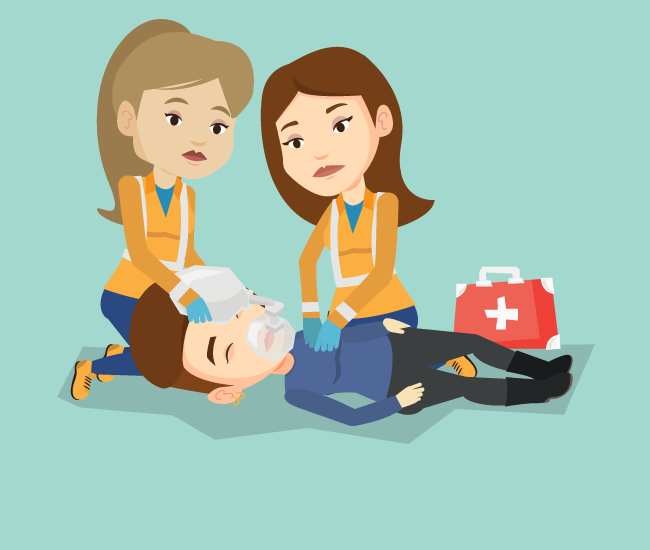BLS stands for Basic Life Support.
BLS certification may refer to two things:
- Training that includes Healthcare Provider level skills such as 2-person CPR, pulse checks, bag valve mask use, and rescue breathing without compressions for people that have a pulse.
- Countries outside of the United States will often use the term BLS when referring to CPR training. We have also found that many healthcare companies within the U.S. will recommend that their employees get BLS training.
BLS can be performed outside of hospitals by emergency medical technicians (EMTs), paramedics, and other qualified bystanders. Paramedics, nurses, doctors, physicians, EMTs, first responders, public safety professionals, and other healthcare related occupations tend to take BLS classes because of the additional skills that they need to use on a regular basis.
Both CPR and BLS classes will teach CPR (for adults, children and babies) for one rescuer, choking and first aid in the same way.
If you’re looking for BLS certification, we have courses available for each level of CPR/AED.
Healthcare Provider BLS/CPR and AED courses:
1. BLS/CPR and AED
2. BLS/CPR, AED and First Aid
We have many CPR and First Aid courses available for all levels of training. The courses are available to take at your own pace, on your own schedule. We’ll save your progress as you go! Get started today!
History of CPR / BLS
CPR instruction had early adoption in the form of mouth-to-mouth resuscitation in 1740 when the Paris Academy of Sciences officially recommended it for drowning victims. However, CPR, as we know it today, is comprised of both breaths and chest compressions. It was not until the year 1891 that Dr. Friedrich Maass performed the first documented chest compressions in humans. In 1956, Peter Safar and James Elam invented mouth-to-mouth resuscitation. The following year, the U.S. military adopted mouth-to-mouth resuscitation for unresponsive victims. Cardiopulmonary resuscitation (CPR) was officially developed in 1960, the same year that the American Heart Association began a program to teach close-chest cardiac compressions to physicians. A more thorough timeline of the history of CPR has been compiled.
What is BLS Certification?
Basic Life Support training and certification is commonly required of Health Care professionals and other working professionals whose jobs or volunteer positions place them at risk for needing to provide CPR to a co-worker or visitor. Read more about who needs BLS certification.
The act of BLS certification is to verify that a person has been trained in CPR and has demonstrated a required level of competency regarding the core skills involved in providing CPR care to a person in cardiac arrest. In the United States, the BLS certification does not give permission to provide care nor does it imply an obligation to act during a crisis as long as the rescue act is voluntary. The CPR certification is simply proof that the person has indeed been trained in CPR and has demonstrated minimum competency during this course according to the latest ECC/ILCOR and American Heart Association recommendations and guidelines.
Though accredited Basic Life Support certification is required to follow consistent and up-to-date guidelines set forth by the American Heart Association, there is no guarantee that every course will be effective and consistent even if the end certification is a card provided by a large national company. In certain cases, an instructor may be certified to teach a national curriculum but may not follow the directives for proper teaching. The instructor may stray on tangents or talk about medical stories that are important to them but may not be the most effective use of training time. Instructors can be late for class, teach contradicting techniques, skip sections of the training course, and simply fail to impart the important skills that students will need to master in order to be effective CPR providers. Because of these potential shortcomings, uniform and consistent training and testing are becoming more and more popular with online BLS certification through a blended BLS format.

